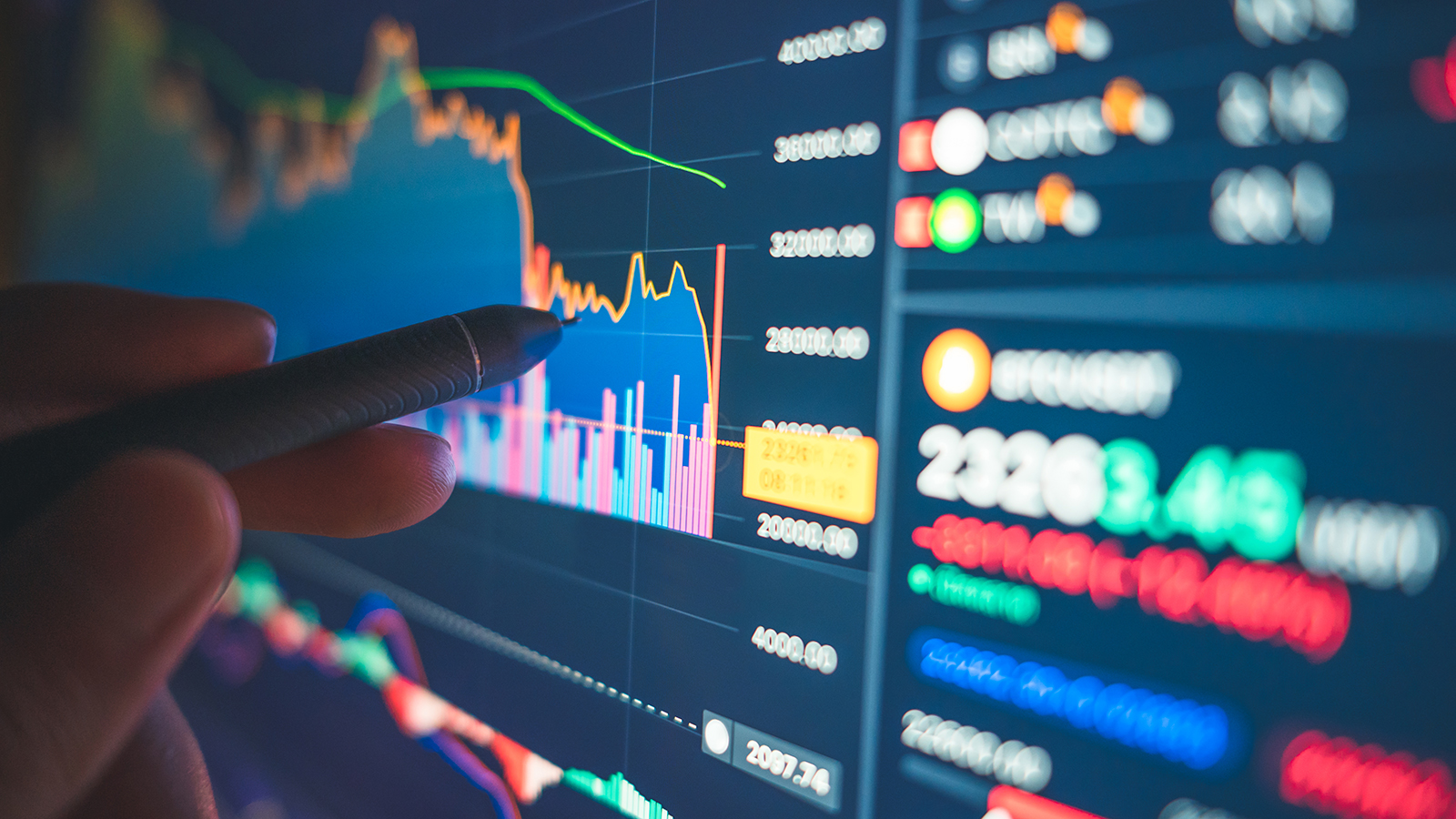Modeling Risk
Thursday, April 1, 2021
By Cristian deRitis
While COVID-19 continues to weigh on public health and the economy, signs of resolution are on the horizon. Though we remain focused on the pandemic, vigilance today does not preclude us from planning for the future. A year after it became clear that COVID-19 was a once-in-a-century crisis, let's consider what we have learned from the pandemic about risk management.
Five trends point to the future of our industry:
Forecasting is hard, especially during situations we've never seen before. In retrospect, there were early warning signs regarding the potential spread of COVID-19, but our systems and algorithms either ignored them or gave them too little weight.
The pandemic experience demonstrated that our best defense against uncertainty is to look at the world through many different lenses. A diversity of data sources, models, scenarios and risk analysts increases the likelihood of detecting and dealing with emerging risks.
What's more, a growing body of evidence supports the view that having a more diverse workforce leads to better decision-making and higher profits. Diversification of our risk management teams is therefore equally critical to ensure we don't focus too narrowly on our own experiences.
For example, if a period of elevated inflation is imminent (as many fear), it might be useful to have an expert on call who has studied this phenomenon. Further, banks should want to ensure that credit models incorporate sensitivities to rising prices and interest rates.
We don't know what the next economic shock will look like, but odds are it won't look anything like the previous ones. Having diverse experiences, perspectives, data and scenarios provides the best chance for both identifying and addressing future risks. “It can't happen here” sounds convincing until it actually does happen here.
The diversification trend extends to modeling techniques as well. Account-level, segment-level and portfolio-level credit risk models each have strengths and weaknesses. Relying too heavily on a single modeling approach increases the likelihood that our forecasts will be wrong. Far more useful is a range of forecasts that allow us to size up the risks.
The pandemic demonstrated the value of leveraging both simple models and more sophisticated machine-learning algorithms. Both have their place.
Within my organization, we leverage AI tools to continuously summarize and index millions of published news articles around the globe. This provides us with real-time assessments of the potential pandemic-driven default risk of businesses and credit instruments. Today, we are adapting this same technology to develop more detailed, timelier measures of economic activity.
Though AI enabled us to comb through millions of datapoints quickly, the pandemic also revealed the limits of sophisticated models. Confidence in credit loss forecasts declined as economic indicators, such as unemployment, exceeded their historical ranges.
Models trained on history were blind to policy interventions like payment forbearance, government stimulus programs and innovations in monetary policy. Simpler modeling approaches filled in the gaps by allowing us to assess sensitivities quickly and transparently. Ultimately, the combination of simple and sophisticated models - along with human judgment-provided the best approach for managing through the crisis.
Enterprise risk management won't be replaced by AI or machine-learning algorithms - at least not anytime soon. The most successful organizations will be those that leverage a wide range of intelligences, both natural and artificial.
The pandemic revealed that there is no substitute to using “alternative data.” Long lags in collecting, compiling and distributing surveillance data proved inadequate in the face of a fast-moving virus. The fog of information complicated both risk assessment and decision-making.
Lessons learned from operating in this information vacuum, along with the adoption of cloud computing and analytical tools, will lead to greater improvements in extracting and distributing data from internal systems.
Throughout the pandemic, companies and researchers found that data collected for other purposes created an opportunity for more timely insights. Payroll data from HR management software provider ADP, for instance, can produce more frequent snapshots of the labor market picture than traditional government surveys.
Updated listings and reviews from apps such as Yelp can show real-time information on the number of small businesses that are either temporarily or permanently closed. Meanwhile, indexes created by Google and Apple track mobility and measures of online sales activity, giving us greater insight into consumers' revealed preferences than responses to surveys.
Not to be confused with “alternative facts,” alternative sources of quantitative data will expand as analysts look to overcome the deficiencies in their credit risk models and researchers seek out new ways to measure economic activity.
Given their oversight role, risk managers have often been viewed as obstructionists. This no longer holds true. Businesses are now integrating risk professionals throughout their organizations, and risk management expertise may soon be more highly valued than an MBA.
Having gone through two major economic shocks within 15 years, the need to identify, mitigate and manage risk is apparent. Lending constraints may have cost some revenue in the short term but have saved financial institutions over the longer term.
Calls for easing up on regulations and reducing capital were growing louder right before the pandemic hit, when unemployment was at record lows. Luckily, those calls were not heeded.
As a result, unlike the Great Financial Crisis, the solvency of the financial system was never in doubt during COVID-19. Accounting rules, such as IFRS 9 and CECL, created confidence by forcing lenders to build up capital in advance of potential losses. Fears that these rules would lead to gross under-capitalization and procyclicality proved to be unfounded.
The value of risk management has been proven time and again. Investments in ERM pay for themselves in terms of losses avoided. Moreover, companies across all industries are seeing significant returns on investment in terms of quality, productivity and customer satisfaction.
As a result, more positions across the enterprise will incorporate risk management principles, even as risk oversight groups expand their mandates.
The speed and severity of the COVID-19 shock will lead to a new risk management role: risk hunter. Firms will continue to go through the exercise of identifying potential risks to their core business activities, but CEOs and their boards will be asked to evaluate the risk from additional “known unknowns.”
The effects of climate change are already top of mind. In addition, risk hunters will be considering the impact of events such as future pandemics, financial crises, cyberattacks, domestic terrorism, sovereign debt crises, geopolitical tensions and supply-chain disruptions. They will consider scenarios that previously existed only in science fiction, along with events that extend beyond our current imaginations.
Parting Thoughts
We cannot underestimate the toll that COVID-19 has extracted on all of us. The tremendous loss of life weighs heavily and has made many people reconsider their outlook on what's really important.

While management of the crisis could have been better on several fronts, it's important that we learn from the experience and use those lessons to do better in the future. On the bright side, the enhanced risk management practices that have been adopted will mitigate future risks and create their own opportunities.
The quantitative tools we develop to monitor and manage risks will undoubtedly find their way into new products and services. Innovative insurance products, derivatives and other financial instruments will open new markets and give households and businesses fresh ways to measure and transfer risks.
A year ago, we may have lacked the insight or imagination to consider the extent of the downside risk from COVID-19. Now, we shouldn't lack the imagination to consider the potential upside from the lessons learned.
Cristian deRitis is the Deputy Chief Economist at Moody's Analytics. As the head of model research and development, he specializes in the analysis of current and future economic conditions, consumer credit markets and housing. Before joining Moody's Analytics, he worked for Fannie Mae. In addition to his published research, Cristian is named on two U.S. patents for credit modeling techniques. He can be reached at cristian.deritis@moodys.com.
•Bylaws •Code of Conduct •Privacy Notice •Terms of Use © 2024 Global Association of Risk Professionals


